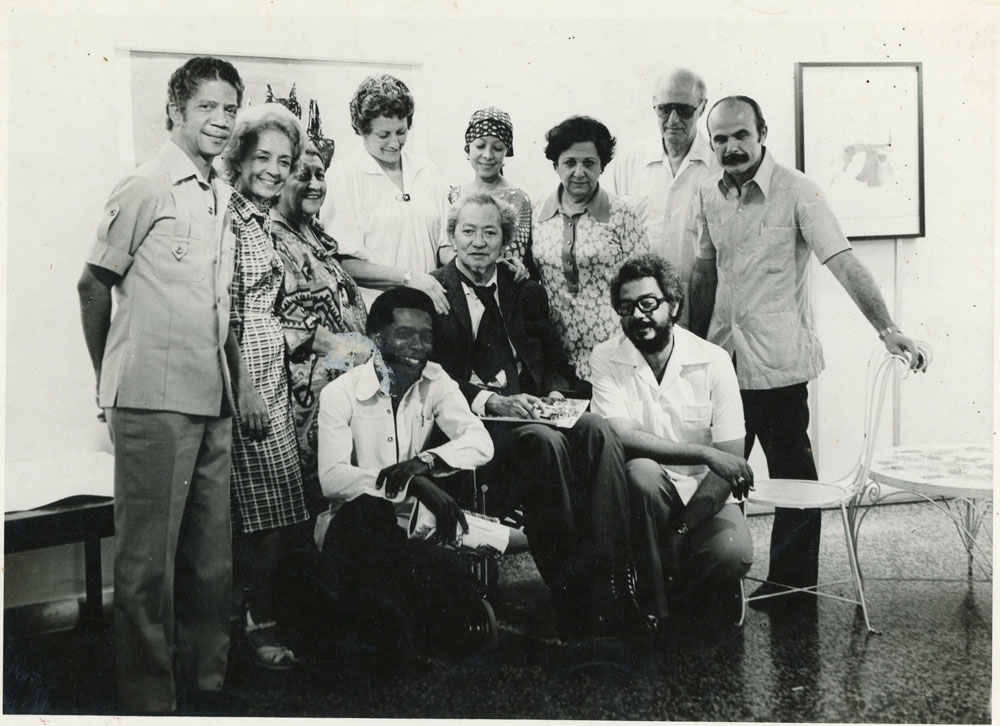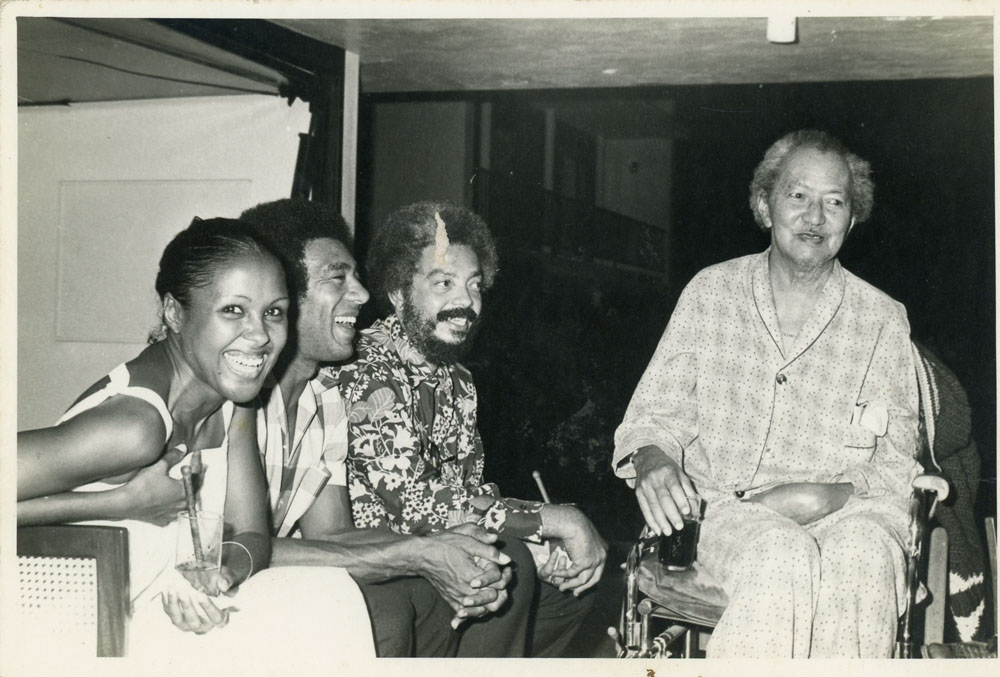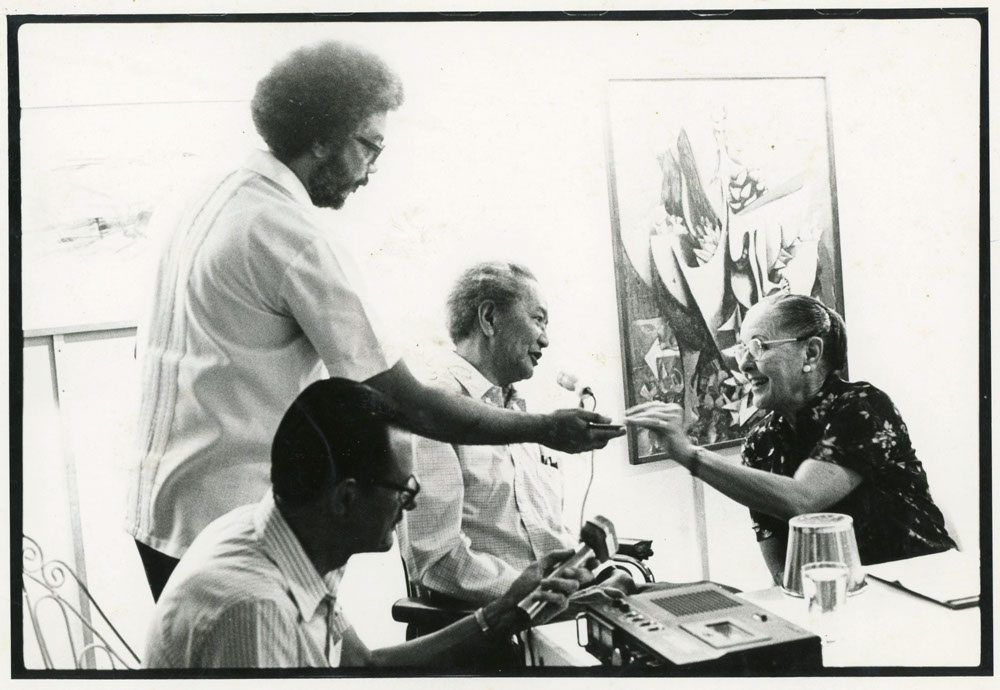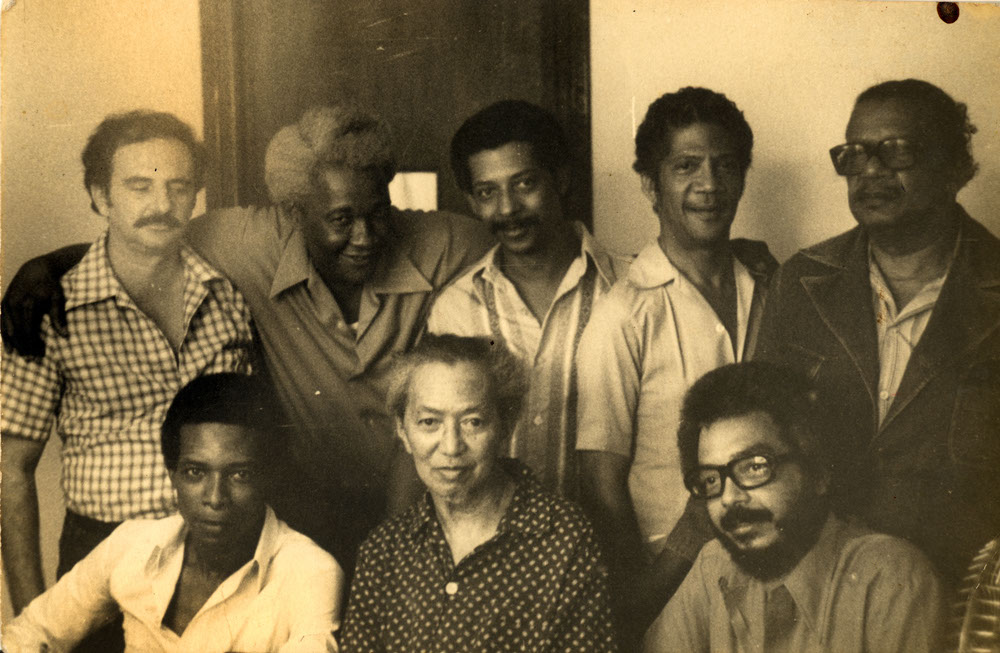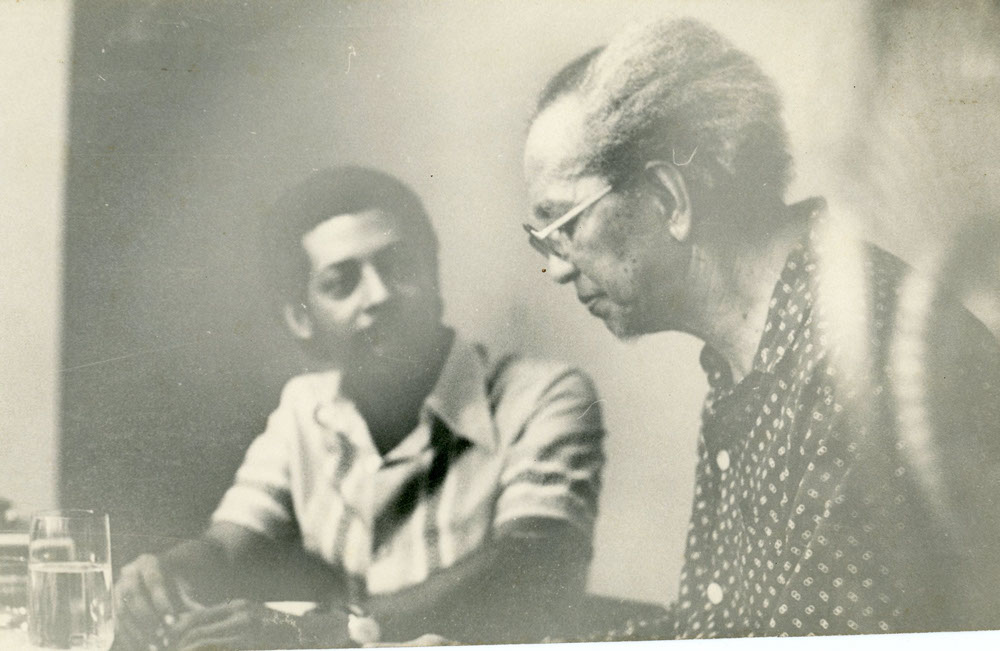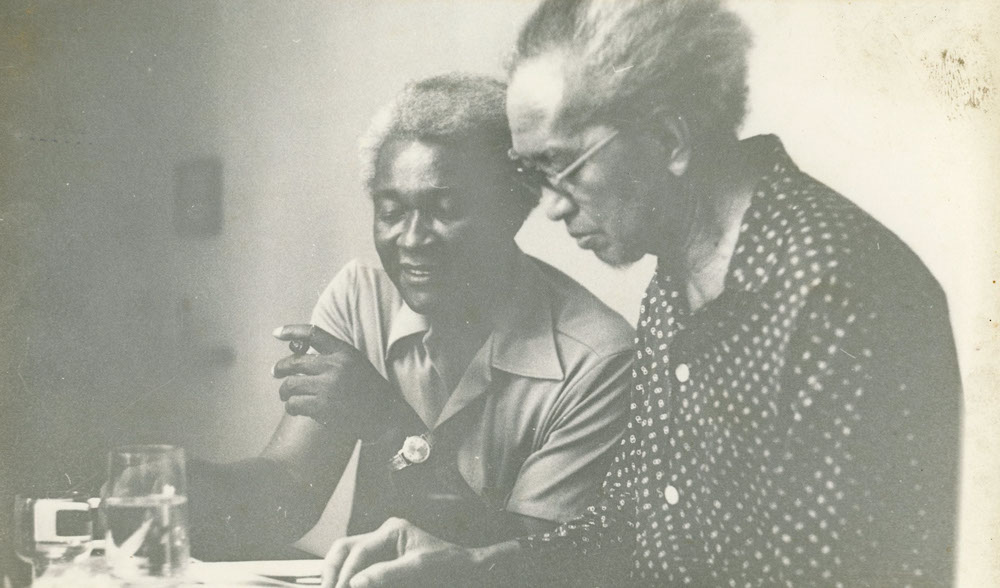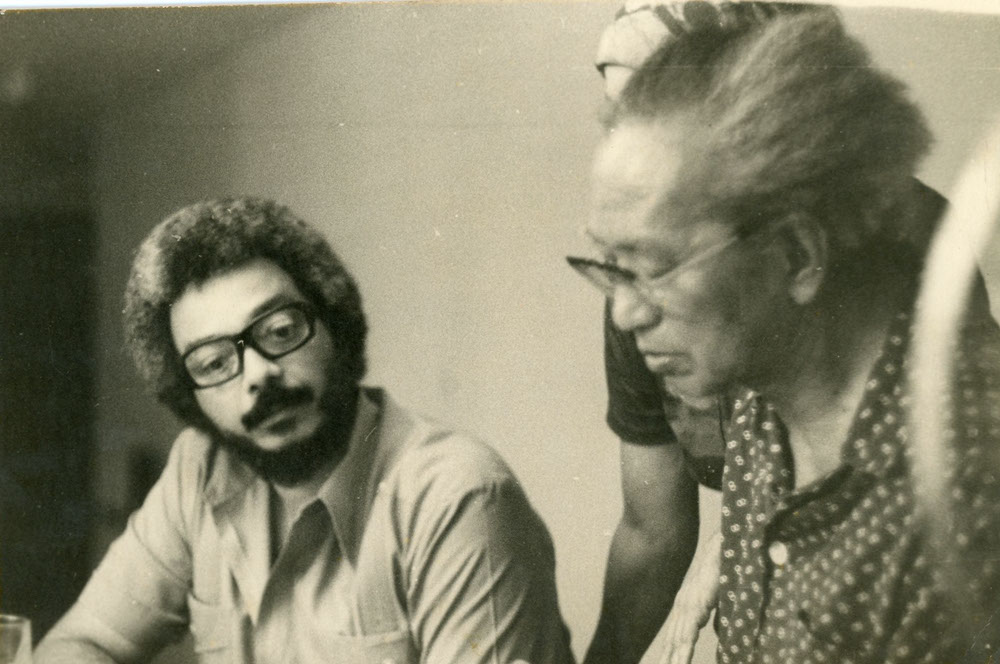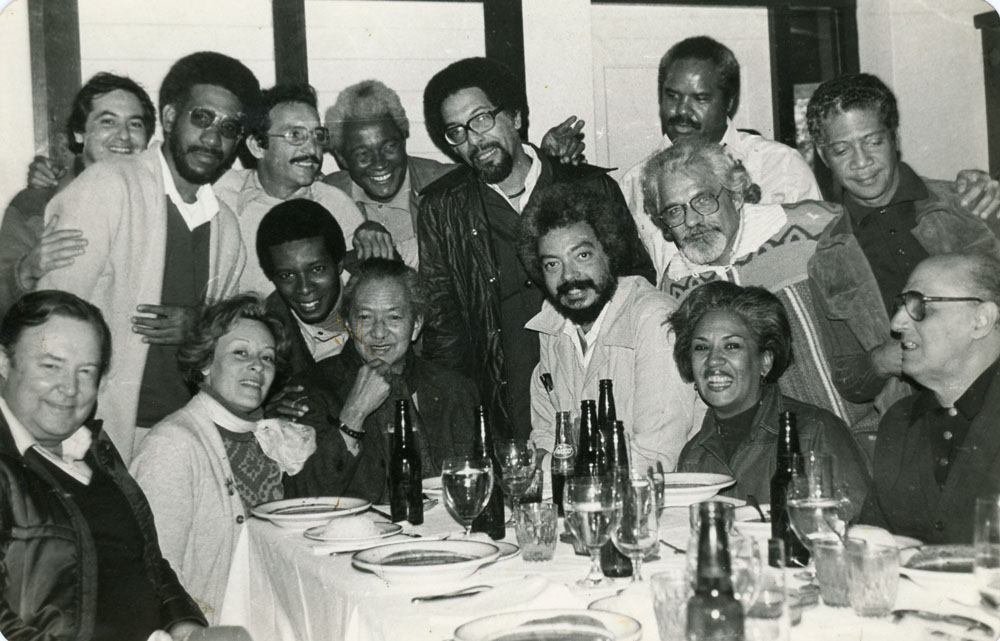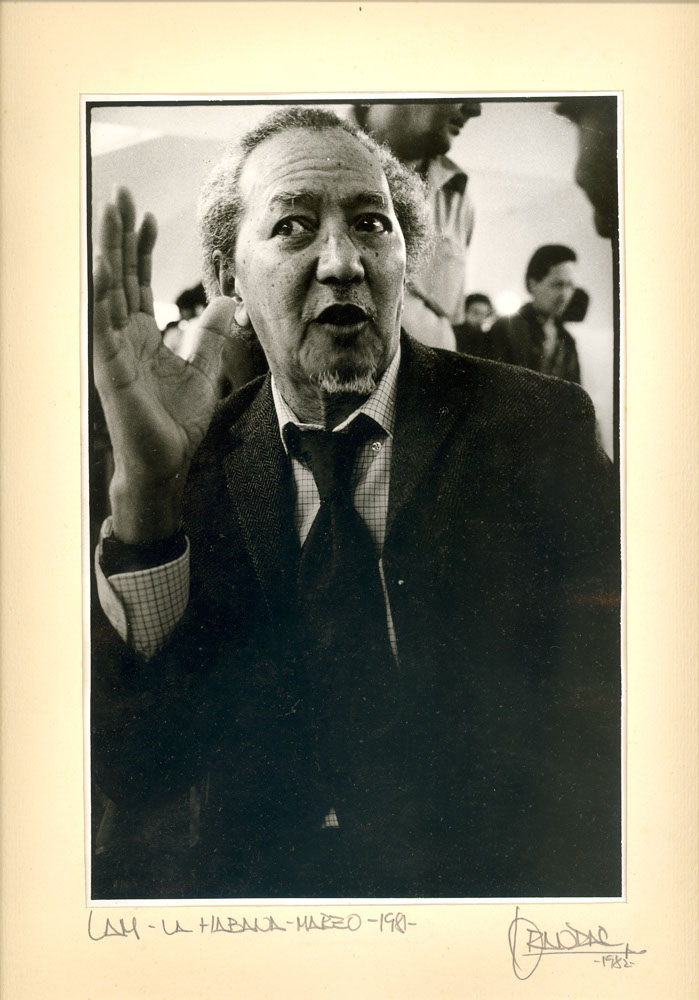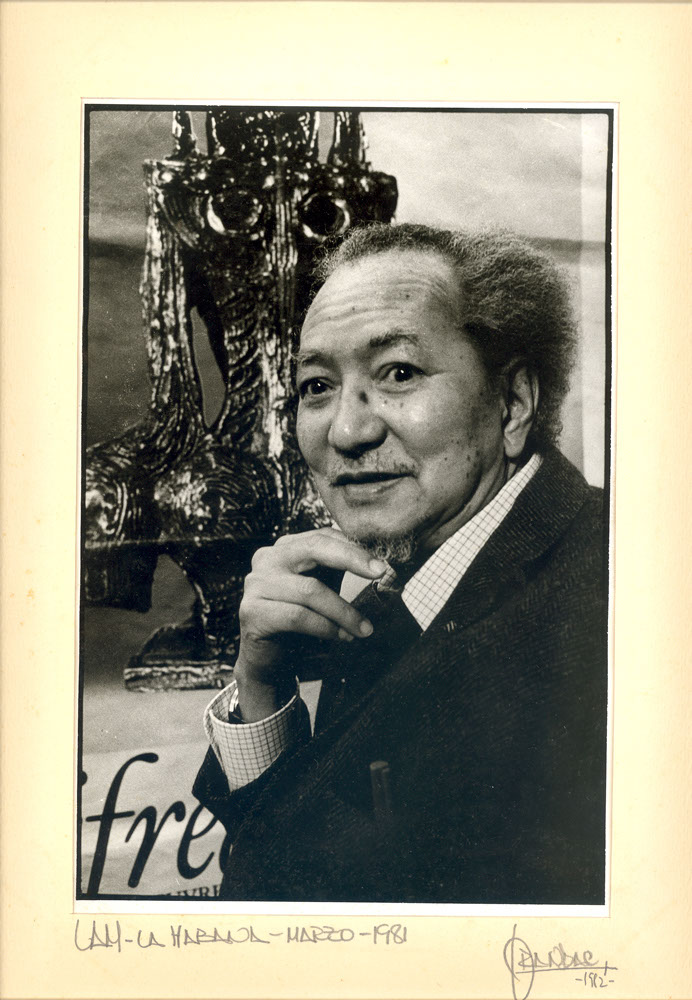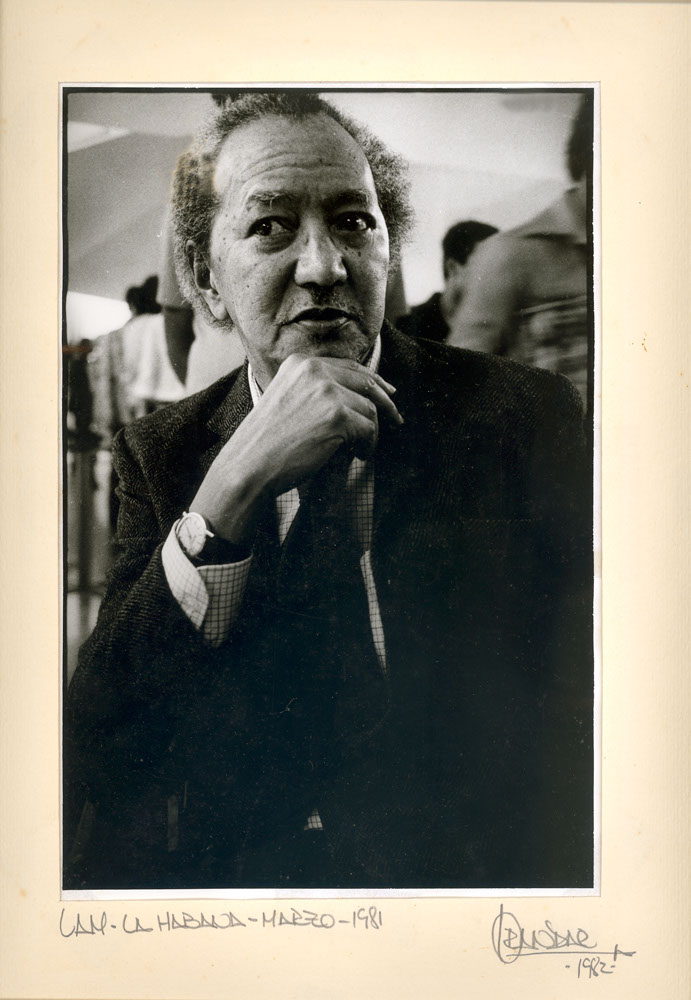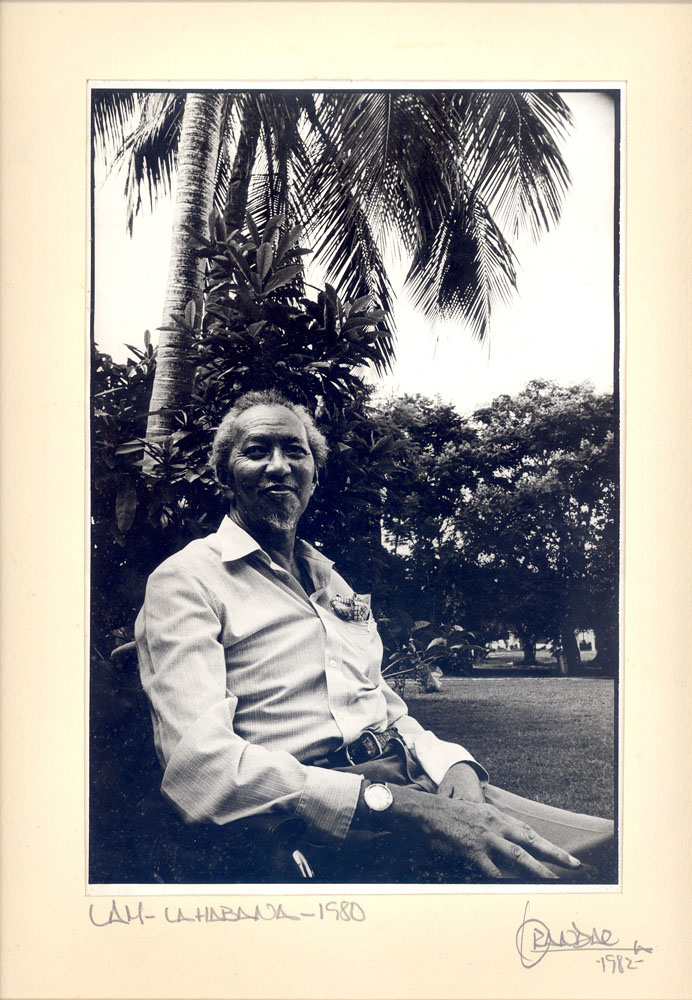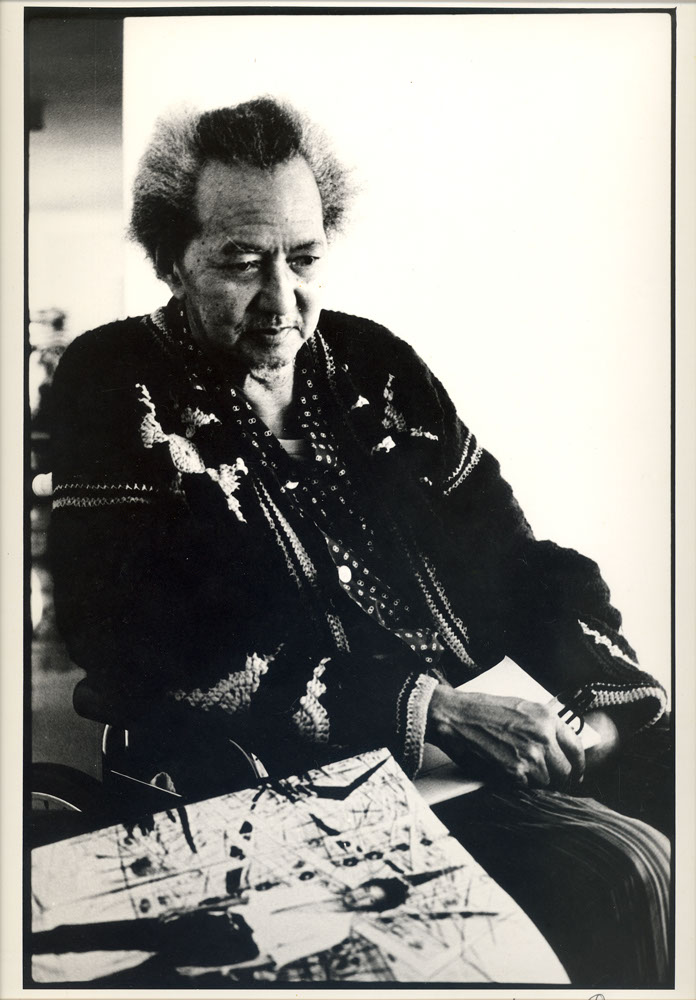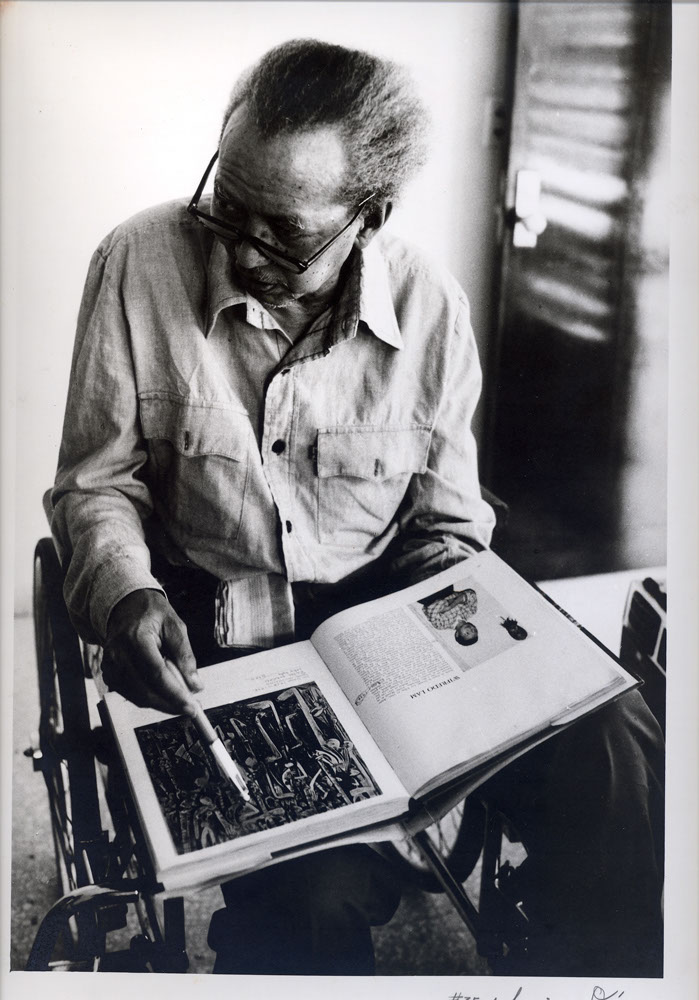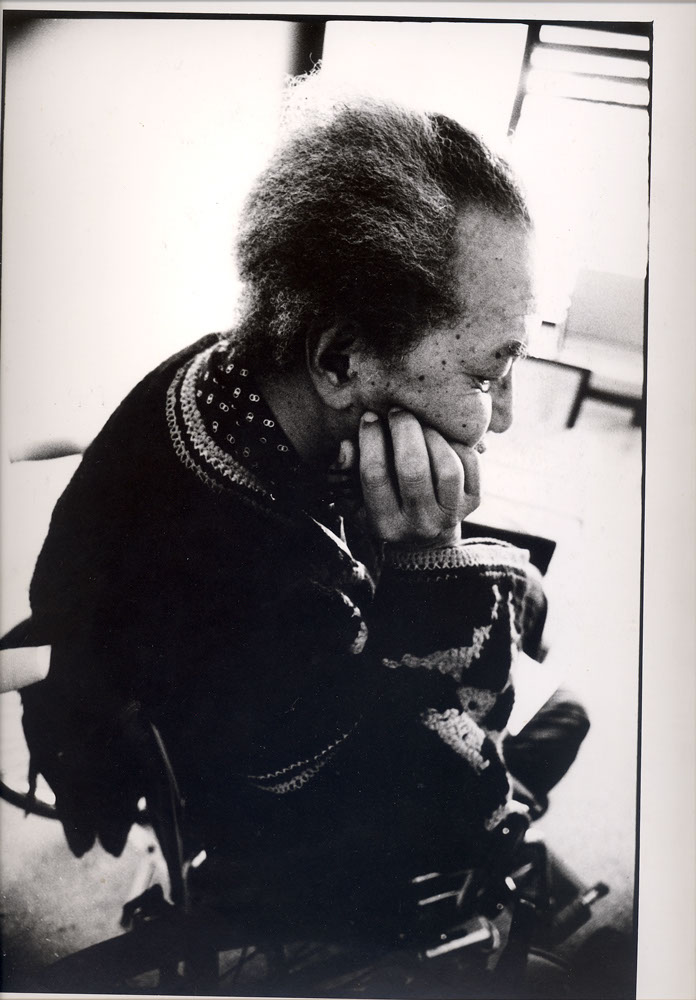The prophetic vision of Wifredo Lam (Sagua la Grande, 1902 – Paris, 1982), dating from the 1940s, began to produce constellations of artists linked to the several poetic discourses of the master. Those encounters produced tangible results starting in the 1960s, when Lam sponsored and encouraged the Salón de Mayo exhibition in Havana in 1967, and then by his participation in the Cultural Encounter of Havana in 1968. He kept in touch with the socio-cultural reality of the country while alternating his time among France, Italy, and Cuba. In 1977 he produced the portfolio “The Last Voyage of the Ghost Ship” with 12 numbered lithographs and accompanying text by Gabriel García Márquez, presented in the National Museum of Fine Arts in Havana.
In the period from 1979 to 1981, in a totally different situation with regard to the state of his health and his trajectory as a person and an artist, Wifredo Lam entered the Frank País Hospital, in Marianao. With a regimen of physiotherapy, Lam began to recover.
From the beginning of his time in the hospital, accompanied by his secretary Adelita Gallo, Lam began to receive visits from artists, intellectuals, and musicians connected to the Cuban cultural scene. Maestro Odilio Urfé, a musician who was director of the Popular Music Seminar, organized some of those meetings with close friends and scholars, such as Rogelio Martínez Furé and the opera singer Yolanda Hernández. Others, such as Rafael Queneditt, met Lam through common acquaintances such as the painter Manuel Couceiro. Queneditt explained to Lam what activities the Grupo Antillano had in mind and the master became interested in the Grupo and expressed his desire to meet the other members.
In one of my visits to the Frank País hospital I met alone with Lam and tried for a conversation rather than an interview. Listening to his dialogue, which was more like a monologue, he talked about Cuban comic theater and commented that “the comic theater prolonged poverty.” Lam recalled one of such performances in Martí Theater that included the sound of a locomotive, and one of the characters on the stage shouted “watch out, watch out, here comes the train.” Then the master laughed like a child, with a cackle that was quite surprising to me, like the awakening of a euphoria, a sense of what was Creole. In another conversation we talked about the paintings on exhibit in the National Museum of Fine Arts. Lam asserted that “a single line of mine is worth more than all those portraits by English painters...”
His recovery was satisfactory and the doctors confirmed that the patient was improving. That made it possible for Lam to leave the Frank País Hospital and move to the Minister of Culture’s protocol house in Siboney.
In one of those houses in Siboney, surrounded by beautiful vegetation with the sunshine poking through, the master was told of the Grupo Antillano’s collective agreement to appoint him as the Grupo’s Honorary President for Life.
In the protocol house there was a more casual atmosphere, excitement over getting together with the “living icon.” On some of the visits the photographer Ramón Martínez Grandal, who was at the time a photographer for the magazine Revolución y Cultura, was there with his cameras, along with Mario Díaz Leyva, a photographer at the Ministry of Culture. Both of them did portraits of sessions with Lam standing or in his wheelchair, holding forth with soliloquies about the past.
“A Painter of Magical Realism” was the title of a one-person show by Manuel Mendive in Galería L in November 1980, which Lam visited. At such times he moved about in a wheelchair, always accompanied by specialists of the Minister of Culture. In the visitor’s book the master wrote comments praising the work on display and signed his name. Mendive keeps the book with deep affection.
At that time artists who had always said that Wifredo Lam had left an everlasting mark on their work were getting to know the master. This was a moment of affirmation. Queneditt, Larrinaga, Ayala, Ocejo, Haití and Toscano all visited Lam at the protocol house, captured in a photograph that remains as permanent wit- ness of what Wifredo Lam’s presence meant to the Grupo Antillano. We should also recall that many of those artists are no longer with us.
Due to a variety of circumstances, by chance or intent, the tribute to Wifredo Lam took place on 17 January 1981 at the country restaurant El Ranchón. The “Portrait of Mexico” exhibition had its opening that day at the National Museum of Fine Arts in Havana. It also coincided with a poetry reading at the Casa de las Américas by the African-American poet Jayne Cortez, accompanied by Robert Edwards, a noted sculptor. Both were close friends of Ramón Haití, and they attended the tribute to Lam at El Ranchón. Their presence, together with many other artists, was a necessary connection. Jayne Cortez and Robert Edwards took pictures of the event that perhaps someday might be identified and published.
The second tribute to Lam took place in the Galería Habana (Línea and F, Vedado), which belonged to the Cuban Cultural Fund, in March 1981. On that occasion Lam’s recuperation was evident. He was smiling, signing catalogues, making sketches, calling the public to approach with autograph requests, and recording the event in a drawing. It should be noted that those tributes were due to the initiative of Grupo Antillano. They were truly mise-en-scène cultural events in Havana, and were well received by Wifredo Lam. At that phase of his life, in declining health and physical strength, he received the recognition in his own country that he had enjoyed for decades in international circles.
Guillermina Ramos Cruz, 2012




